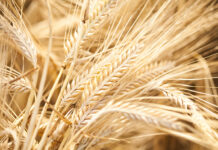Farmers in Ethiopia, Kenya, Malawi, Mozambique and Tanzania are experiencing increased yields and high income through food security Sustainable Intensification of Maize-Legume Cropping Systems for Food Security in Eastern and Southern Africa (SIMLESA) project. Launched in 2010 by the Australian Centre for International Agriculture Research, SIMLESA is encouraging adoption of methods such as zero tillage, crop residue retention and production of improved fodder crops.
The first step towards food and nutrition security is a branched out farming system. As such, in addition to maize, sorghum and different types of pulses, SIMLESA farmers also have vegetable crops, fruit trees, and livestock on their farms. This is according to Daniel Rodriguez, an associate professor at the Queensland Alliance for Agriculture and Food Innovation.
The project aims to increase maize-legume productivity and reduce production risk by 30% for 650,000 farming households by 2023. Farmers have also been supported by the project through innovation platforms. Here they take part in variety selection trials for maize and legume seeds while exchanging their agriculture knowledge.
Goshime Muluneh, a researcher at the Ethiopian Institute of Agricultural Research, Ethiopia’s SIMLESA partner organization explained that the main purpose of including farmers in the variety selection trials is to understand what they need from the seeds. Once that is established, they are able to screen and produce seed varieties according to the farmers’ selected criteria.
Through the project, over 40 new farmer-selected maize varieties have been released. Thesehave been found to yield 30-40% more than traditional seeds under drought conditions, and 20-25% more under optimum conditions. That is according to Mulugetta Mekuria, SIMLESA project leader and a senior scientist and regional representative at International Maize and Wheat Improvement Center, Zimbabwe.
Meanwhile, data gathered from 900 farming households from Ethiopia depict an increase in net maize income by 35%. This has been attributed to the adoption of CA. Incomes increased further when such practices were combined with complementary inputs such as improved seed varieties.
According to Richard Munang, coordinator of UN Environment Program Africa Regional Climate Change Program, industrializing Africa’s CA will potentially cut postharvest losses accounting for up to US$48 billion each year. This, in turn, will potentially reverse the need for imports currently costing the continent US$35 billion each year. Furthermore, CA approaches are have been proven to be compatible with those used by African smallholders.








